John Burke Queensland Proprietary Limited
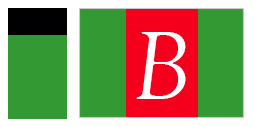 Founded by John Burke who came to Australia from County Cork, Ireland as a 19 year-old seaman in 1861, this company’s “home ground” was the Queensland coast and over the one hundred and four years of its life, it operated over forty ships.
At the start of the Second World War there were six ships in its fleet:
Founded by John Burke who came to Australia from County Cork, Ireland as a 19 year-old seaman in 1861, this company’s “home ground” was the Queensland coast and over the one hundred and four years of its life, it operated over forty ships.
At the start of the Second World War there were six ships in its fleet:
Ship |
Built |
Gross Tons |
In Service |
| Canonbar | 1910 | 708 | 1927-1946 |
| Poonbar | 1913 | 909 | 1928-1947 |
| Wandana | 1913 | 974 | 1931-1948 |
| Tinana | 1901 | 791 | 1932-1946 |
| Bidelia | 1927 | 1385 | 1935-1955 |
| Alagna | 1928 | 729 | 1939-1955 |
Wandana was formally requisitioned by the Australian Government in 1941 for service to the Thursday Island (by then a military) area, and Canonbar went under the command of the United States Small Ships Section from 1943 to 1945.
Read moreDate posted: 2014-04-01 | Comments(0)
Broken Hill Proprietary Company Limited
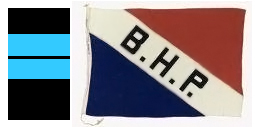 “B.H.P”’s shipping ownership dates from late 1917, following some years of chartering and nominee-participation. The company, incorporated in August 1885, needed to link its Port Pirie smelting operations and Newcastle coal resources, and its ships all bore the prefix word “Iron”. Between the wars the company Australian Iron & Steel became a BHP subsidiary. The company Interstate Steamships Pty Limited worked in close association with BHP for many years.
As the Second World War opened the Company had eight ships in service:
“B.H.P”’s shipping ownership dates from late 1917, following some years of chartering and nominee-participation. The company, incorporated in August 1885, needed to link its Port Pirie smelting operations and Newcastle coal resources, and its ships all bore the prefix word “Iron”. Between the wars the company Australian Iron & Steel became a BHP subsidiary. The company Interstate Steamships Pty Limited worked in close association with BHP for many years.
As the Second World War opened the Company had eight ships in service:
Ship |
Built |
Gross Tons |
In Service |
| Iron Master | 1921 | 3351 | 1923-1957 |
| Iron Knob | 1922 | 3349 | 1923-1955 |
| Iron Prince | 1923 | 3352 | 1923-1956 |
| Iron Warrior | 1923 | 3345 | 1925-1957 |
| Iron Baron | 1936 | 4584 | 1936-1966 |
| Iron King | 1936 | 4584 | 1936-1967 |
| Iron Knight | 1937 | 4812 | 1937-1943 |
| Iron Chieftain | 1937 | 4812 | 1937-1942 |
Owned by Interstate Steamships Limited
Ship |
Built |
Gross Tons |
In Service |
| Iron Crown | 1922 | 3353 | 1923-1942 |
| Echunga | 1922 | 3362 | 1925-1957 |
As well, they took delivery of two new-builds during the war years: Iron Monarch (b.1943 gt.4816 svce.1943-1972) and Iron Duke (b.1943 gt 4818 svce 1943-1970).
Iron Chieftain, en route Newcastle-Whyalla at night on 3 June1942, was
torpedoed and sunk east of Sydney by Japanese submarine I.24. Her Master and Chief Engineer were among the twelve crew lost. The thirty-seven survivors were rescued from raft and lifeboat by HMAS Bingera (see “A.U.S.N.” story). Iron Knight, fully laden with iron ore, while lead ship of Convoy OC8, was torpedoed and sunk by submarine I.21 off Eden. The sinking was immediate, the crew loss totaling thirty-six including the Master. Fourteen survivors were taken from a raft, to Sydney.
Interstate Steamships’ Iron Crown, laden with iron ore was torpedoed by submarine I.27 on 4 June 1942 off Cape Howe, Victoria, with thirty-eight of its forty-two crew lost.
BHP’s and the nation’s war effort were further affected by other shipping losses of foreign ships engaged on the specialist iron ore/coal trade. On 12 June 1942, off Sydney, the Panamanian ship Guatemala, bound from Newcastle to Whyalla carrying coke, and on 11 April 1943, off Lord Howe Island, the Yugoslav Recina bound Whyalla-Newcastle carrying ironstone were torpedoed. They were among a number of ships made available to Australia by the British Ministry of War Transport.
Read moreDate posted: 2014-04-01 | Comments(0)
Australasian United Steam Navigation Company
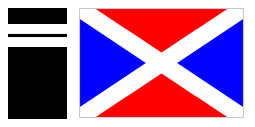 Starting as the Hunter’s River Steam Navigation Company in the early 1840s, the “A.U.S.N” evolved through a number of smaller companies, initially focused on developing the Newcastle-Sydney maritime trade. Over the years, through good and bad times, its contribution to the nation’s passenger and cargo trade increased.
Starting as the Hunter’s River Steam Navigation Company in the early 1840s, the “A.U.S.N” evolved through a number of smaller companies, initially focused on developing the Newcastle-Sydney maritime trade. Over the years, through good and bad times, its contribution to the nation’s passenger and cargo trade increased.
During the Great War two of its vessels spent time as Hospital Ships: Kanowna (about 7000 gt)from June 1915 (but for the first three months as Troopship (A61) and Kyarra (6953 gt) 1914 to April 1915. Kyarra then served as a Troopship (A55) until conversion back to a Hospital Ship in May 1918, but was sunk by enemy action on the 26th of that month. The smaller Suva, converted in July 1915 to an Armed Boarding Ship, served in the Middle East, while the passenger ship Indarra was requisitioned in October 1917 as a Troopship, Australia-Mediterranean. Wyreema was engaged in bringing home Australian troops and families from late 1918 to May 1919. At the start of the Second World War its fleet comprised fourteen ships:
Ship |
Built |
Gross Tons |
In Service |
| Mackarra | 1919 | 2515 | 1919-1941 |
| Macumbra | 1919 | 2525 | 1919-1943 |
| Mildura | 1920 | 3478 | 1924-1951 |
| Mareeba | 1921 | 3663 | 1924-1941 |
| Baralaba | 1921 | 998 | 1925-1949 |
| Murada | 1921 | 3345 | 1926-1947 |
| Mungana | 1920 | 3315 | 1926-1951 |
| Bingera | 1935 | 922 | 1935-1948 |
| Ormiston | 1922 | 5832 | 1936-1955 |
| Orungal | 1922 | 5826 | 1936-1940 |
| Babinda | 1936 | 659 | 1936-1955 |
| Corinda | 1937 | 3376 | 1937-1961 |
| Buranda | 1918 | 685 | 1938-1946 |
| Bulimba | 1928 | 739 | 1941-1942 |
Bingera was taken up by the Navy early December 1939, Orungal was requisitioned in June 1940 for a single trooping voyage, Bulimba went under control of the United States Small Ships Section during 1942 and though released in 1946 did not rejoin the Company’s fleet. Baralaba, requisitioned in May 1942, was camouflaged and fitted for a special voyage, still a mystery, and was returned to her owners in February 1943. Before Australia was yet at war with Japan, Mareeba became a victim of the German commerce raider Kormoran in June 1941 while voyaging under requisition between Asian ports, with 26 crew lost and 25 captured. Macumba, part of the sea supply chain to Australia’s north, was attacked and sunk by Japanese aircraft while en route Brisbane-Darwin, on 6 August 1943. Passenger ship Ormiston was torpedoed off Coffs Harbour in May 1942, following 1940 trooping to Darwin and 1941 to Noumea voyages, and with repairs completed in early 1944, trooped on the coast until July 1946. Murada was torpedoed off Crowdy Head on 24 July 1942 but survived. Coombar (not listed above, owned by Wm.Crosby & Co, chartered to A.U.S.N. 7 November 1940) served as a minesweeper 1941 to 1946.
Read moreDate posted: 2014-04-01 | Comments(0)
Australian Shipping Board
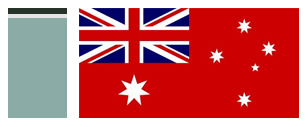 This organization was formed, as the Board, in March 1941 and was concerned initially with control of overseas ships chartered for the Australian coastal trade, and all ships built by Australian shipyards. Its first ship (“A” Class, later becoming popularly known as “River” Class) was commissioned in mid-1943.
This organization was formed, as the Board, in March 1941 and was concerned initially with control of overseas ships chartered for the Australian coastal trade, and all ships built by Australian shipyards. Its first ship (“A” Class, later becoming popularly known as “River” Class) was commissioned in mid-1943.
By the end of the Second World War eight River class ships, all of similar design, were in cargo service with the newer ones being allocated to shipping companies for management.
Ship |
Built |
Gross Tons |
In Service |
| River Burdekin |
1943 | 5003 | |
| River Clarence |
1943 | 5031 | |
| River Fitzroy |
1944 | 4958 | |
| River Glenelg |
1944 | 4986 | |
| River Loddon |
1944 | 5001 | |
| River Mitta |
1945 | 5179 | |
| River Murchison |
1945 | 5039 | |
| River Murrumbidgee |
1945 | 5032 |
All supported coastal trading and no losses or damages are known.
Read moreDate posted: 2014-04-01 | Comments(0)
Anshun renamed Culcairn
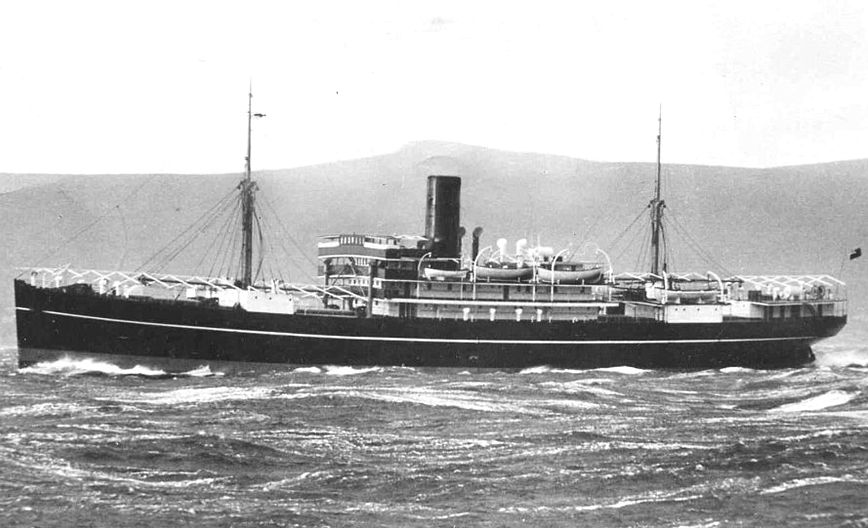 Anshun was requisitioned by the British Ministry of War Transport and commissioned as a Royal Australian Navy stores ship, serving in this role until becoming a war casualty. Later recovered, it was renamed Culcairn under the ownership of James Patrick & Company Limited.
Anshun was requisitioned by the British Ministry of War Transport and commissioned as a Royal Australian Navy stores ship, serving in this role until becoming a war casualty. Later recovered, it was renamed Culcairn under the ownership of James Patrick & Company Limited.
Date posted: 2014-03-08 | Comments(0)